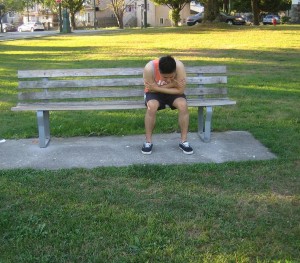Rheumatoid arthritis typically occurs in a slow rate with minor symptoms that come and go, usually on both sides of the body and progress over a span of weeks or months. The symptoms of this condition tend to vary from one individual to another and can change from day to day. The episodes of the disease are called flare-ups while the inactive periods are called remission.
Fatigue
The individual feels unusually drained before any symptoms become apparent. It is important to note that fatigue can precede the start of other symptoms by weeks or months. It can come and go from week to week or by day to day. Fatigue is oftentimes accompanied by a general feeling of being sick or even depression.
Stiffness in the morning

Morning stiffness is often an early indication of arthritis. The stiffness that lasts for a few minutes is a usual symptom of a degenerative form of arthritis. It can last for several hours and essentially a symptom of inflammatory arthritis. There is also stiffness after a period of prolonged inactivity such as sitting or napping.
Stiffness of the joints
The stiffness in one or several smaller joints is also a common early indication of rheumatoid arthritis. This can occur at any time whether the individual is active or not. In most cases, the stiffness starts in the joints of the hands. It typically occurs in a slow rate but can occur abruptly and involve several joints in just a span of 1-2 days.
Joint pain
It is important to note that joint stiffness can be followed by joint pain during movement or while at rest. This can also affect both sides of the body equally. In the early phase of rheumatoid arthritis, the usual areas for pain include the wrists and fingers. With the help of pain management measures that you can learn in a first aid class, you can provide relief to this symptom.
Minimal joint swelling
Minor inflammation of the joints typically starts early where the joints look bigger than normal. The swelling can also cause the joints to feel warm to the touch. The flare-ups can last for a few days to a few weeks and the pattern tends to increase over time.
Fever
If low-grade fever is accompanied by symptoms such as joint inflammation and pain, it is an early sign of rheumatoid arthritis. Nevertheless, fever that is higher than 100 degrees F can indicate other conditions or even an infection.
Tingling and numbness
The inflammation of the tendons can add pressure on the nerves, thus resulting to tingling, numbness or burning sensation in the hands. The joints in the feet or hands can generate crackling or squeaking sounds as the damaged cartilage grinds on the joints while moving.
Diminished range of motion
The inflammation in the joints can cause the ligaments and tendons to become deformed or unstable. As the disease progresses, the individual could not bend or straighten some joints.
Other early symptoms
When rheumatoid arthritis is at its early phase, other symptoms can occur such as the following:
- Dry mouth
- Generalized weakness or malaise
- Dry, itchy eyes and eye discharge
- Difficulty sleeping
- Loss of appetite and weight loss
- Chest pain when breathing
- Hard bumps of tissue beneath the skin on the arms
